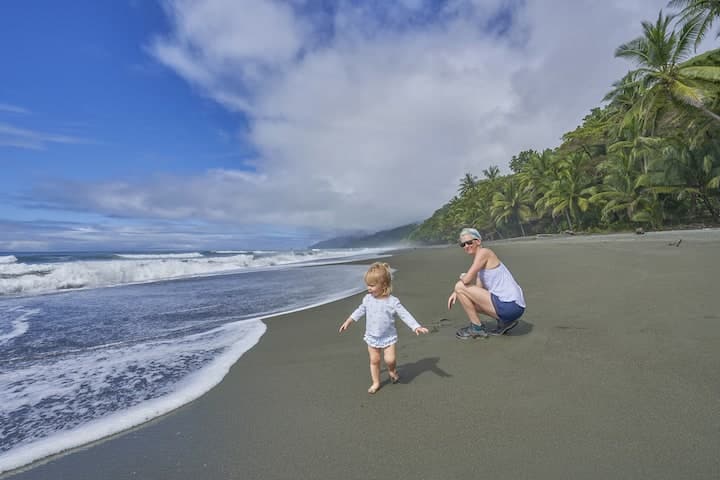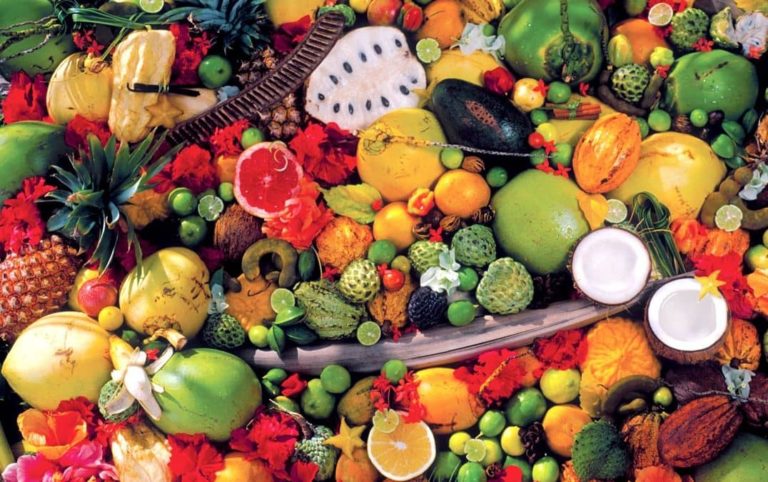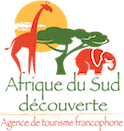Because 6% of the world’s biodiversity is found in Costa Rica, the country has declared 25% of its territory as national parks, protected areas, or reserves. Costa Rica has established a system for the protection and conservation of its flora and fauna.
There are 27 national parks, two of which are UNESCO World Heritage Sites: Isla del Coco National Park (1997) and Guanacaste National Park (1999), 58 refuges, 32 protected areas, 15 marshy wetlands, 11 forest reserves and 8 biological reserves complete the picture.
The Amistad Reserve (1983), shared with Panama, is also a UNESCO World Heritage Site.
Costa Rica, a land blessed by the gods, protects more than 13,000 km² of natural land and sea areas.
Fauna and flora in figures:
- 10,000 plants and trees,
- 914 species of sedentary or migratory birds,
- 256 species of mammals including 23 aquatic and 30 endemic (2023 inventory)
- 35,000 species of insects,
- 160 species of amphibians,
- 220 species of reptiles,
- 1,013 species of fish.
Both public and private administrations are responsible for protecting this incredible resource.
Various laws, such as the Organic Law on the Environment, the Forest Protection and Exploitation Act, the Wildlife Act, and the Parks Act, are legislative tools that enable real progress in environmental protection.
From the most popular to the most remote
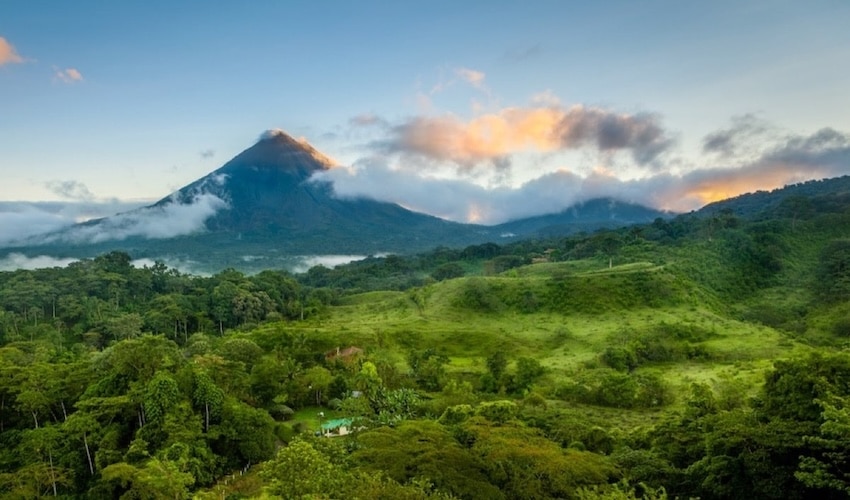
Arenal Volcano National Park
Arenal Volcano National Park is located in the foothills of the Tilaran mountain range and the San Carlos plains, 15 km from Fortuna. The region is renowned for its hot springs, horseback riding, hanging bridges, and, of course, the national park. A true laboratory for the northern part of the country, it supplies 70% of Lake Arenal’s water reserves. In 1968, the colossus awoke, destroying many surrounding villages. From 1998 to 2010, lava flows were frequent, but since then, only a few fumaroles and minor eruptions have been observed. Its perfect conical shape rises majestically in the middle of the plain.
Area: 12,124 hectares Location: Northwest Biodiversity: Ceiba, turkeys, toucans, hummingbirds, monkeys, coatis, anteaters, pacas, wild pigs, etc.
Price: $15 / person
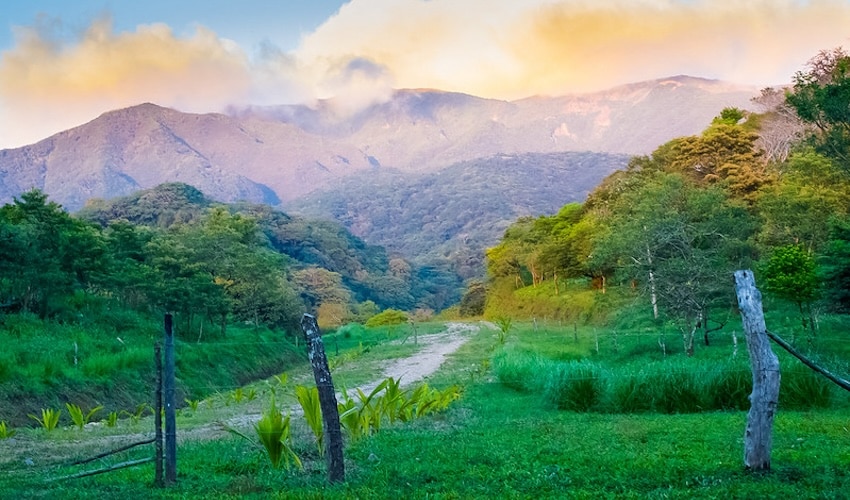
Rincon de la Vieja Volcano National Park
Divided into different sectors, Las Pailas is the most popular. Its bubbling mud pools are particularly interesting to observe. Rincon de la Vieja National Park is made up of three ecosystems: the tropical dry forest, the tropical rainforest, and the cloud forest. This is why the park is also home to an impressive array of flora and fauna. Thirty-two rivers crisscross the park.
Area: 14,083 hectares Location: North Guanacaste Access: Easy
Price: $15 / person
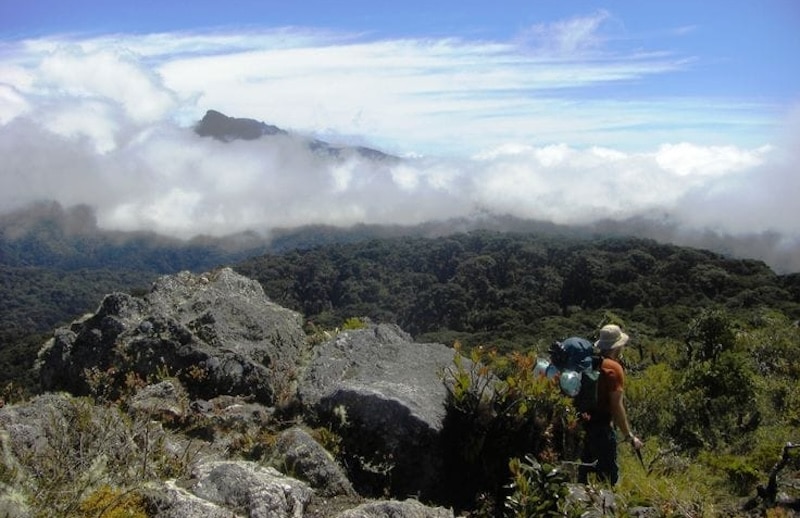
Amistad International Park – UNESCO World Heritage Site
One of the largest parks in the country, one of the most difficult to access, and also one of the least known. Its topography varies from 200 m to 3,549 m above sea level. It is located between Costa Rica and Panama. Several trails allow you to visit it. It is rarely visited because it is far from tourist sites, even though it is home to 20% of the country’s biodiversity.
Area: 193,929 hectares of land in Costa Rica Location: Talamanca Mountains – Bordering Panama Biodiversity: 263 amphibians, 400 birds, 500 types of trees, and over 130 orchids Access: Restricted
Price: $12 / person – Guide required

Tenorio Volcano National Park – Rio Celeste
This is undoubtedly the most photogenic park in the country. The color of the Céleste River, surrounded by a lush forest, offers a breathtaking landscape. A river with crystal-clear waters that turn turquoise and a 30 m waterfall that flows into a pool of the same color offers a magical spectacle.
Area: 12,905 ha of land Location: Alajuela / Guanacaste Access: easy
Price: $15 / person

Barra Honda National Park
42 caves, 19 explored and 2 open to the public in perfect condition give it a special place. The deepest cave is 780 m.
Area: 2,295 hectares Location: Northern Nicoya Peninsula Biodiversity: Monkeys, reptiles, coyotes, agoutis, peccaries, raccoons Access: Easy
Price: $12 / person
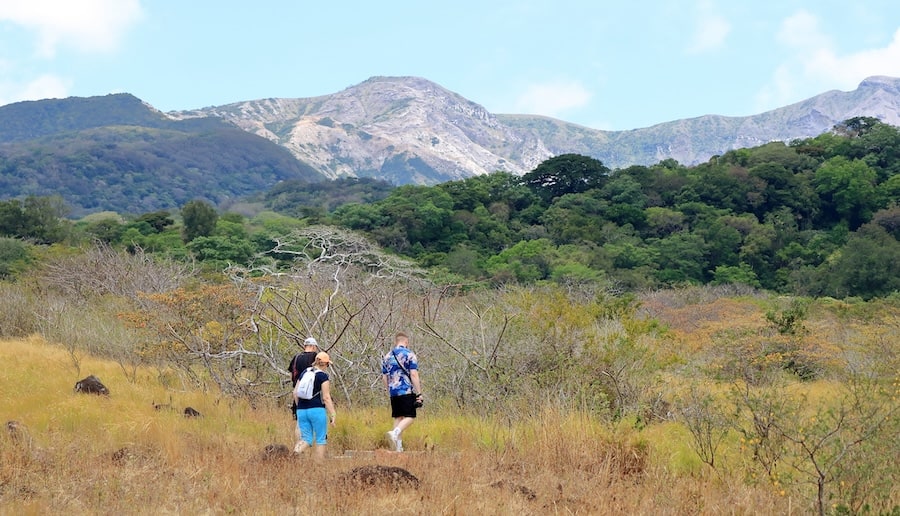
Guanacaste National Park
Located in the northwest of the country, close to Nicaragua, the park is dominated by the Cacao and Orosi volcanoes. A biological corridor and stopover for migratory birds, the park is the region’s water reservoir.
Area: 32,512 hectares Location: North Guanacaste Access: Easy Biodiversity: Ocelots, pumas, agoutis, deer, birds, reptiles
Price: $15 / person
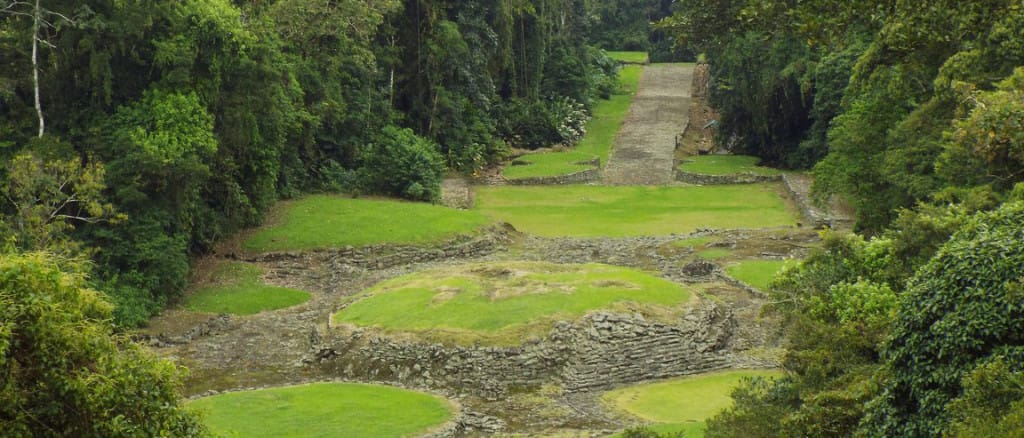
Guayabo National Monument
The archaeological value of the Guayabo National Monument is due to its complex aqueduct network. The monoliths and petrographs are also ancestral testimonies. It is one of the parks of historical value.
Area: 218 hectares Location: Central Mountain Range Access: Very easy
Price: $6 / person

Cabo Blanco National Park
Located at the southern tip of the Nicoya Peninsula, this is the first national park created in Costa Rica. A short distance from Montezuma, Cabuya, and Mal Pais. Secondary forest and magical beaches.
Surface area: 1,172 hectares (2,700 acres) land – 1,790 hectares (4,700 acres) marine
Location: Southern Nicoya Peninsula Access: Easy to moderate Biodiversity: Monkeys, reptiles, agoutis, deer, butterflies, birds
Price: $12 / person
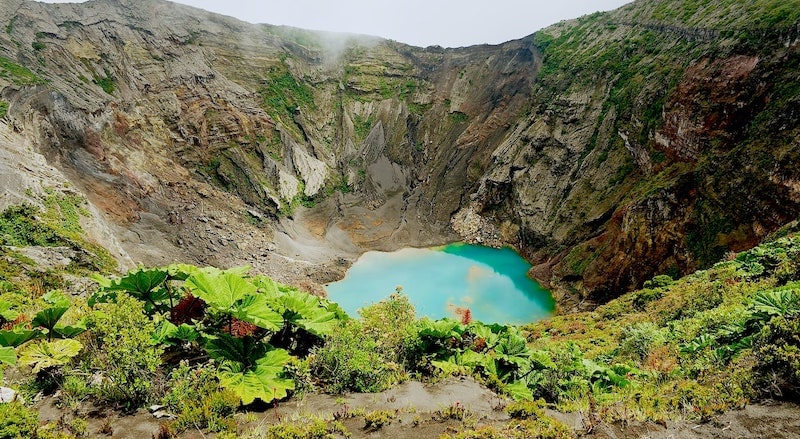
Irazu Volcano National Park
45 minutes from Cartago and 1.5 hours from San José, Irazu peaks at 3,432 m above sea level. Its acidic lake, with its changing colors from gray to turquoise, attracts many spectators.
Area: 2,309 hectares Location: Central Mountain Range Access: Very easy Biodiversity: Common. The main interest is the crater and volcanic activity
Price: $15 / person
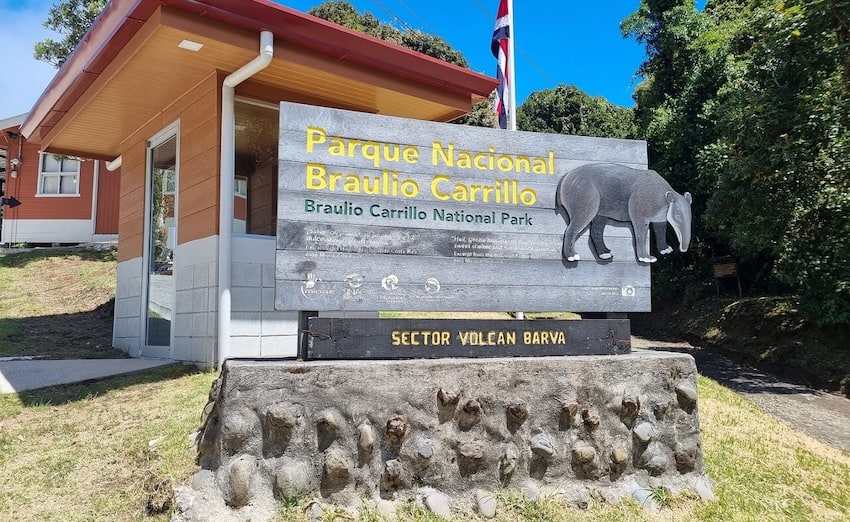
Braulio Carrillo National Park
The park is made up of volcanic peaks and is very difficult to explore. The dense vegetation is made up of primary forest, which is home to some of the richest endemic fauna in the country.
Area: 1,607 hectares Location: Central Valley Biodiversity: 500 birds, 600 trees and plants, 135 mammals Access: Easy to difficult – 2 access points allow hikes over 42 km
Price: $12 / person
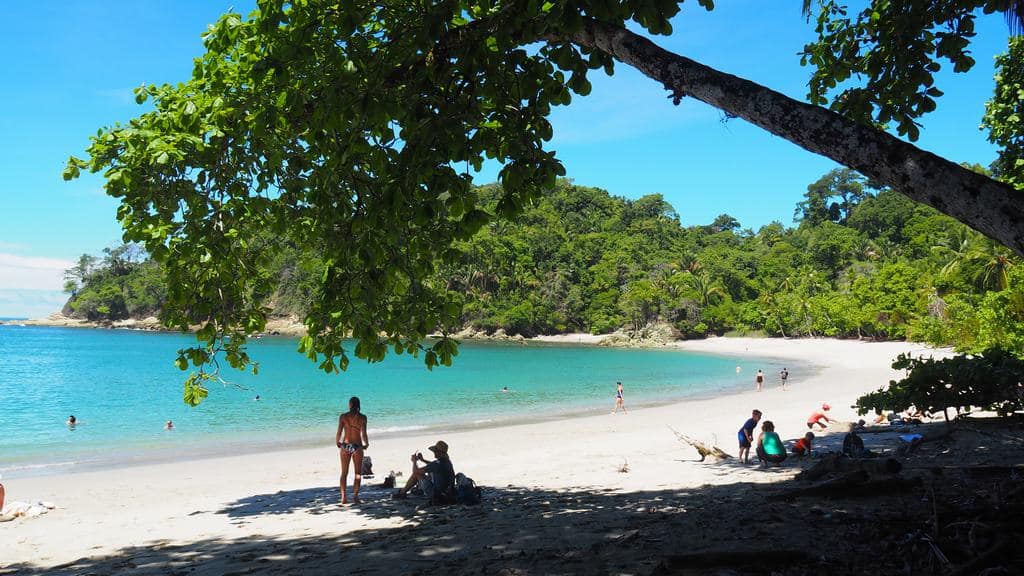
Manuel Antonio National Park
The second most visited park after Poás, the best known and smallest in the country. Its 4 easily accessible beaches are real postcards! If you avoid the busy periods (Sundays, Christmas and Easter) you will leave saying to yourself: I will come back… The trails are well marked and there is even access for people with reduced mobility, in wheelchairs.
Area: 683 hectares (1,620 acres) land – 55,000 hectares (131,000 acres) marine Location: Central Pacific Access: Very easy – Quepos Biodiversity: Monkeys, armadillos, raccoons, sloths, toucans, motmots
Price: $18 / person
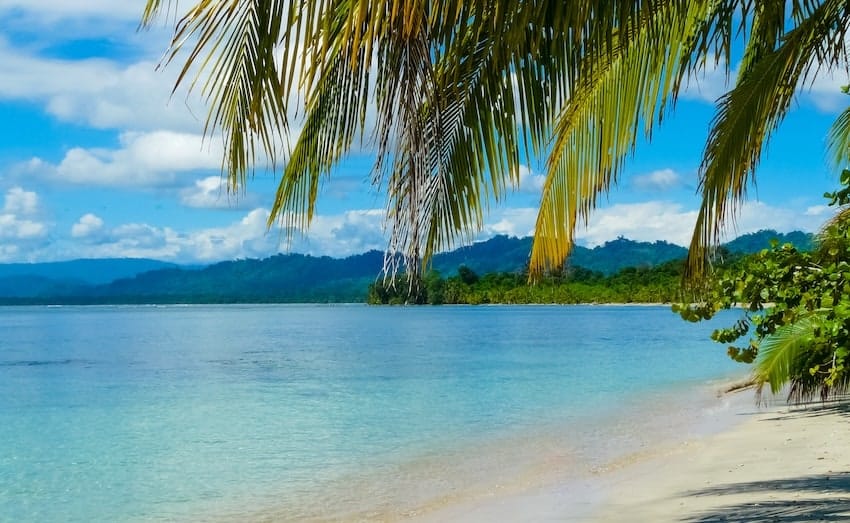
Cahuita National Park
On the Atlantic side, the park, both maritime and terrestrial, offers the largest coral reef in the country. It is its maritime part that attracts visitors due to its richness and ease of snorkeling and diving.
Area: 1,068 hectares (2,400 acres) land – 22,400 hectares (50,000 acres) marine
Location: Southern Limon Province
Biodiversity: Monkeys, reptiles, coyotes, agoutis, peccaries, raccoons
Access: Easy – 2 access points
Price: $6 / person
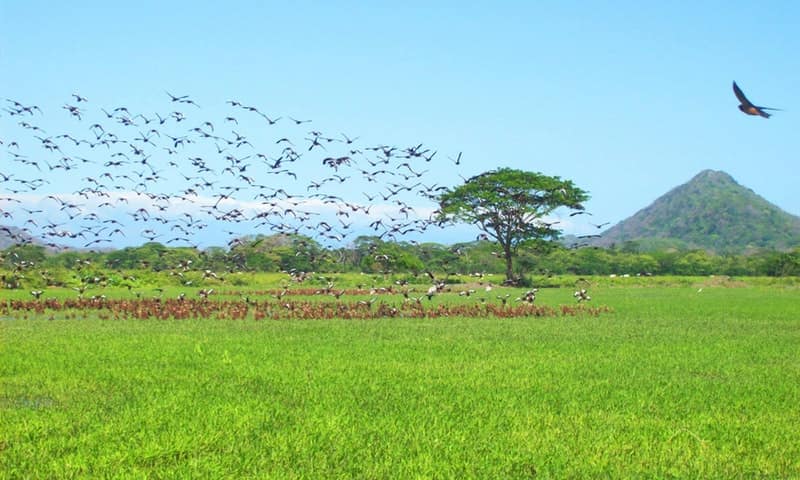
Palo Verde National Park
The main attraction of Palo Verde National Park is the abundance of birds, many of which migrate from the Americas. They take advantage of the marshes fed by the Tempisque River. A multitude of tropical birds nest on Bird Island, located in the river’s mangroves.
Area: 16,804 hectares Location: Arenal Tempisque Access: Easy Biodiversity: Egrets, storks, herons, spoonbills, great ibises, monkeys, white-tailed deer, coatis
Price: $14 / person
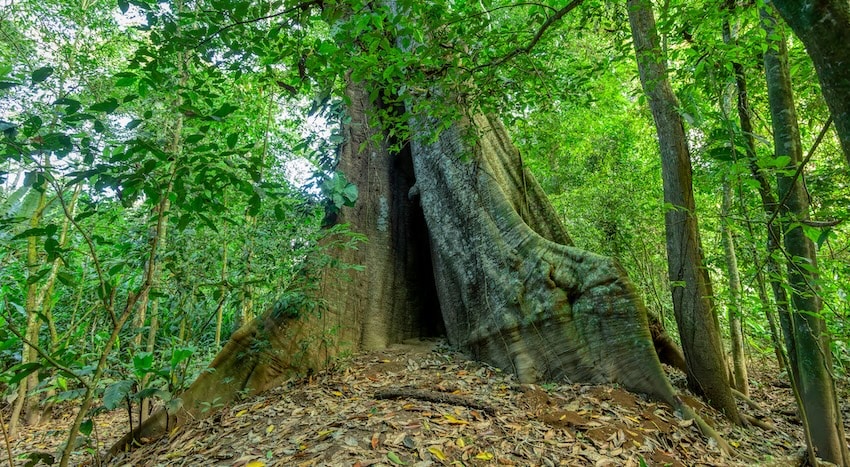
Carara National Park
With its dry North Pacific and humid South Pacific influences, this ecosystem is identical to that of the Amazon. Its proximity to San José and Jaco makes it a popular site.
Area: 4,700 hectares Location: Central Pacific Access: Easy Biodiversity: Monkeys, crocodiles, armadillos, peccaries, sloths, boas, agoutis, kinkajous, margays, ocelots, white-tailed deer, and especially a favorite refuge for scarlet macaws.
Price: $10 / person
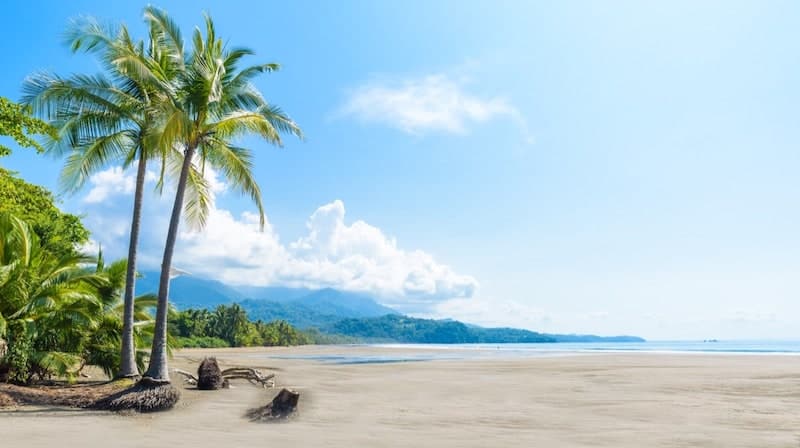
Marino Ballena National Park
Peaceful and tranquil, this little-visited park offers a great opportunity to spend a few days away from the more crowded tourist areas. The park, which is primarily marine, is bordered by vast beaches.
Every year, hundreds of whales come here to give birth to their young.
Area: 100 hectares (228 acres) land area – 5,375 hectares (12,375 acres) marine area Location: South Pacific – Uvita Access: Easy Biodiversity: Monkeys, reptiles, turtles (2 species), dolphins (2 species), whales (3 species)
Price: $7 / person
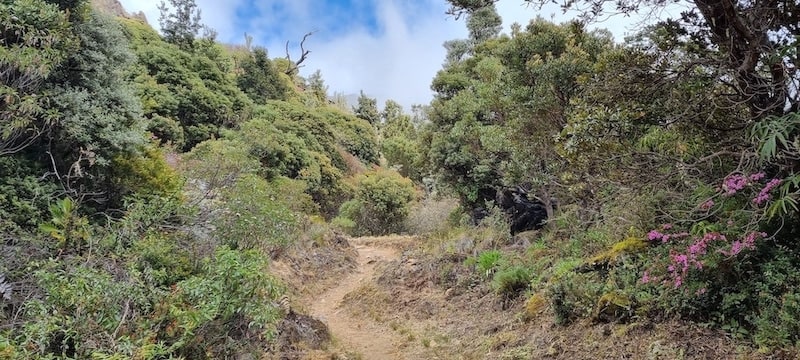
Chirripó National Park
Mount Chirripó, at 3,820 m above sea level, is a favorite among hikers. The climb requires good physical condition and hiking experience, but is not particularly difficult.
Area: 50,150 hectares Location: South of the Talamanca mountain range – San Gerardo de Rivas Access: Easy Biodiversity: Monkeys, reptiles, coyotes, agoutis, peccaries, raccoons
Price: $18 / person – Guide recommended
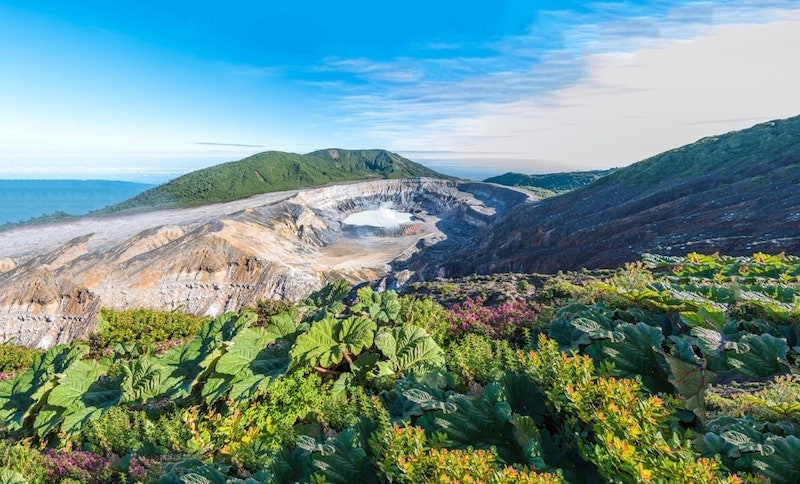
Poás Volcano National Park
One of the country’s five active volcanoes, its acid lake and immense crater make it a must-see, just an hour from the capital.
Area: 6,500 hectares Location: Central Cordillera Access: Very easy Biodiversity: High-altitude tropical forest. Hummingbirds, toucans, trogons, weasels, marmots
Price: $15 / person

Tortuguero National Park
The Little Amazon is a collection of canals and lagoons nestled between the tropical rainforest and the Caribbean Sea. The park’s beaches are home to thousands of turtles of four species.
Area: 26,156 hectares (70,000 acres) land – 50,265 hectares (122,000 acres) marine Location: Northeast – Caribbean Coast Access: Boat or plane Biodiversity: Felines, birds, turtles, manatees, otters, caimans, iguanas, basilisks, howler monkeys, capuchin monkeys, and spider monkeys
Price: $15 / person

Santa Rosa National Park
From the savannah to the coastal forest and evergreen forests, there are no fewer than 255 species of birds, 155 of mammals including 70 bats, 10,000 of insects and 100 of amphibians.
Area: 37,117 hectares (97,000 acres) land – 78,000 hectares (180,000 acres) marine Location: North Guanacaste Access: Easy Biodiversity: Peccaries, jaguars, olive ridley sea turtles, armadillos, raccoons, peacocks, black hawks, and long-tailed manakins.
Price: $15 / person
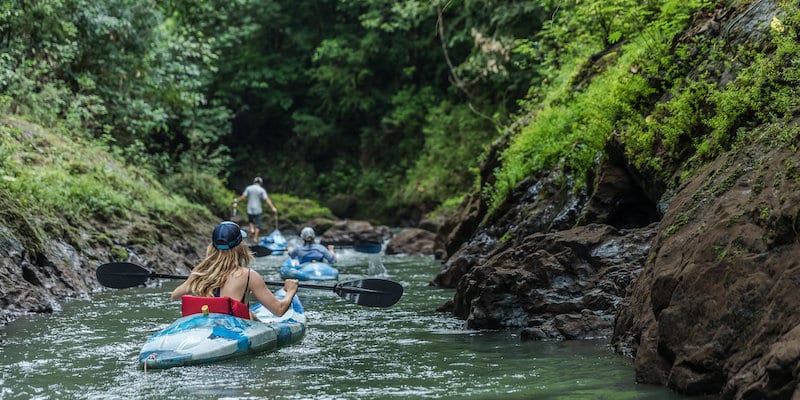
Corcovado National Park
One of the most biologically dense places in the world according to National Geographic. The largest primary forest in the Americas on the Pacific side. A guide is required and must be booked in advance. It is the second largest park in the country and has several entrances: San Pedrillo, Carate, La Sirena, and Los Patos. The most popular is La Sirena. We also offer several options for accommodation in Corcovado National Park.
Area: 54,538 hectares (131,000 acres) land – 2,400 hectares (6,500 acres) sea Location: Osa Peninsula – Southwest of the country Access: Land: easy to difficult – Sea: easy Biodiversity: 500 types of trees and plants, monkeys, reptiles, agoutis, peccaries, raccoons, scarlet macaws, pumas, jaguars, anteaters, 117 species of amphibians and 4 species of sea turtles
Entrance fee: $15 – Mandatory guide not included in the price
A recent look at Costa Rica
Why travel with us?

A flawless reputation since 2008

A single contact in French

Our presence on the ground all year round

Our expertise for a tailor-made offer


